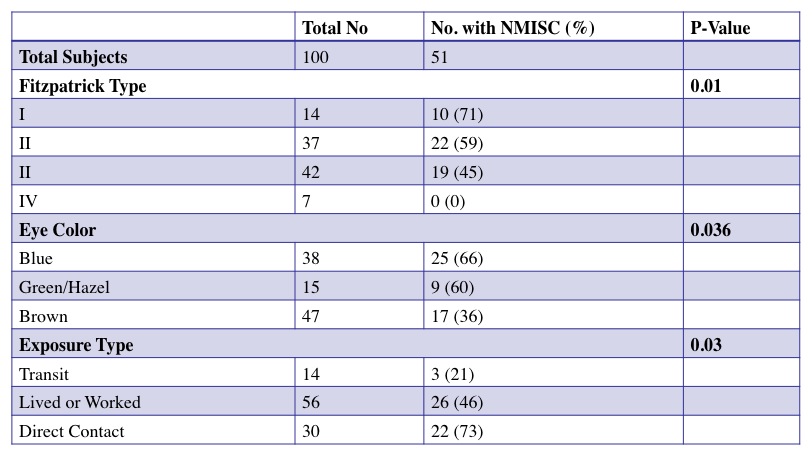|
|
 |
Back to Annual Meeting
Association Between Agent Orange Exposure and Nonmelanotic Invasive Skin Cancer
Kevin D. Han, MD1, Mark W. Clemens, MD2, Andrew Kochuba, MD1, Marry Ella Carter, MD3, Jun Liu, MS2, Karen K. Evans, MD1.
1Georgetown University Hospital, Washington, DC, USA, 2The University of Texas MD Anderson Cancer Center, Houston, TX, USA, 3Veterans Affairs Medical Center, Washington, DC, USA.
INTRODUCTION: Agent Orange, or TCDD (2,3,7,8-Tetrachlorodibenzodioxin), has been linked to many different malignancies. This study was to examine whether dioxin exposure leads to an increased incidence non-melanotic skin cancers.
METHODS: A retrospective review of 100 consecutive males with Fitzpatrick skin types I-IV from August 2009 to January 2010 DCVAMC. Patient demographics, skin cancer, associated malignancies, timing, and location of dioxin exposure were collected. Data were compared to normative data established nationally.
RESULTS: Out of 100 patients with an average age of 65.7, average elapsed time since dioxin exposure was 41 years. Average length of exposure was 2 years. Type of dioxin exposure included working in contaminated areas (49%), spraying Agent Orange (30%), traveling in contaminated areas (14%), and living in contaminated facilities (7%). 26% of patients demonstrated associated malignancies. Patients demonstrated chloracne (43%) and non-melanotic invasive skin cancers (50%). High Fitzpatrick Score, darker eye color, and light-exposure were associated with lower non-melanotic invasive skin cancer incidence (0.036 and 0.003, respectively, p=0.01). Chloracne was correlated to higher non-melanotic invasive skin cancer incidence rates (81% vs. 26%, p<0.01). Average year to onset from exposure was 28 years. The incidence rate of the study population (51.8%) was significantly higher than the national incidence rate (23.8%, p-value<0.001) (Figure 1).
CONCLUSIONS: This is the first time one has shown a link between Agent Orange and non-melanotic skin cancers. In addition to associated malignancies, service personnel with previous dioxin exposure need to be counseled on the cutaneous sequelae of dioxin exposure. Length and degree of exposure appear to be associated with the development of carcinomas. Frequent screenings (every six months) are essential for surveillance of these rapidly growing and invasive cancers. Further studies are warranted to determine a relative risk within this large patient population and to determine appropriate management strategies.

Back to Annual Meeting
|







